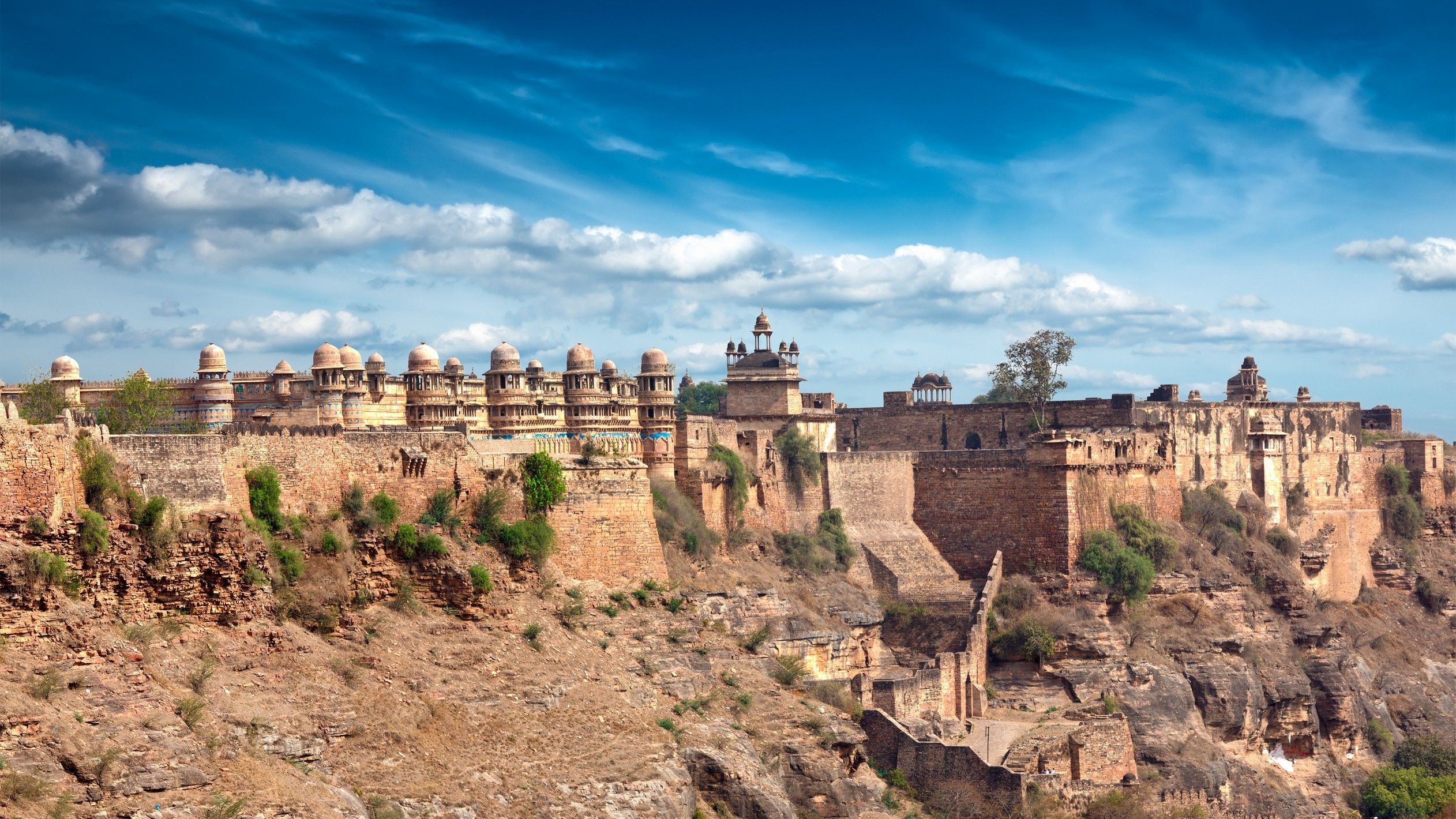
steiners-incredible-india-2024
vakantio.de/steiners-incredible-india-2024
BLOG 12: Udaipur / Rajasthan
प्रकाशित: 11.03.2024
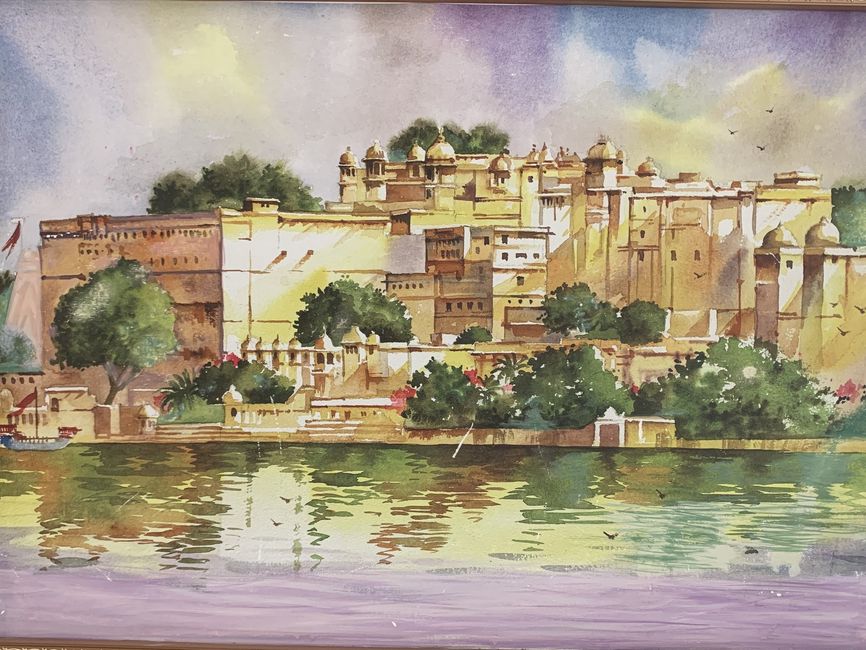
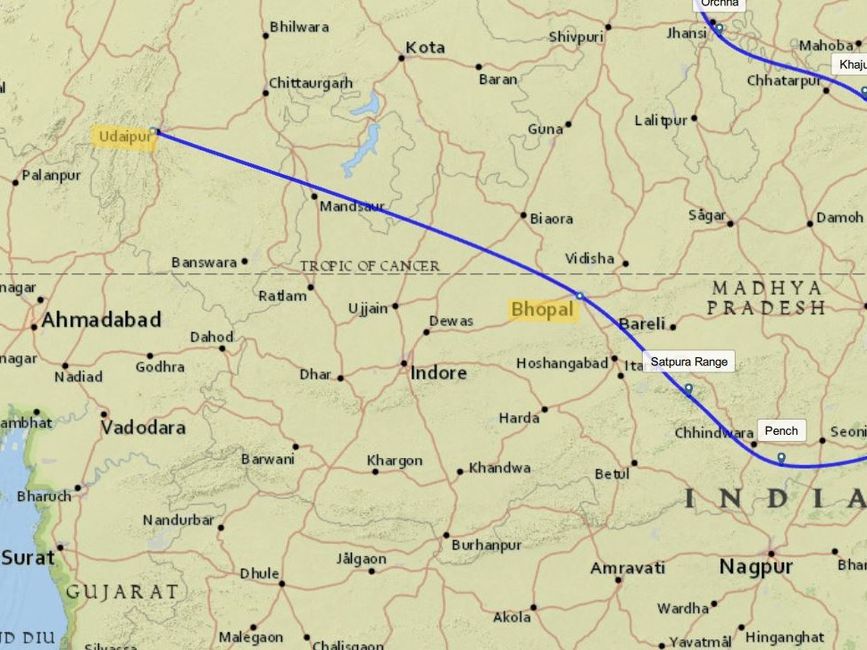
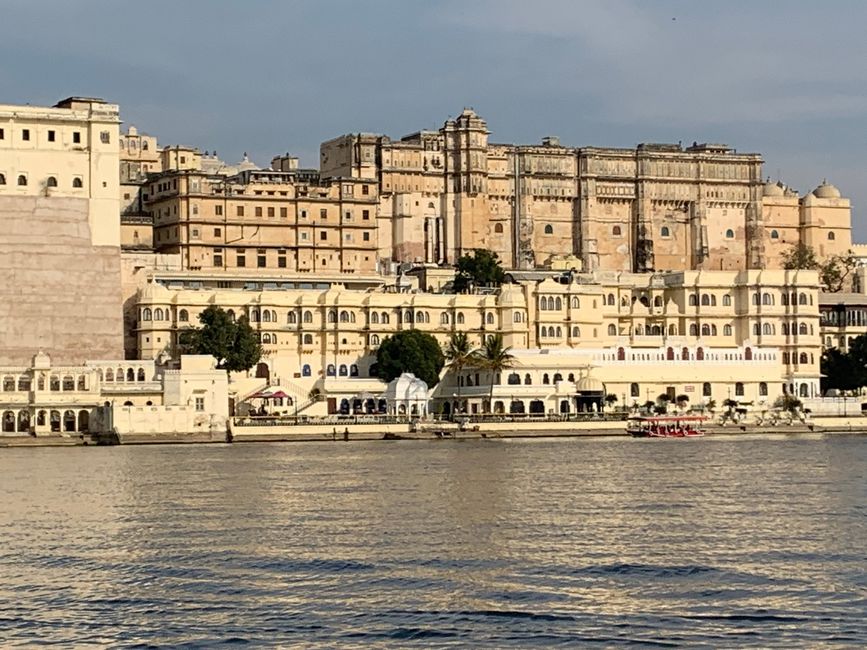
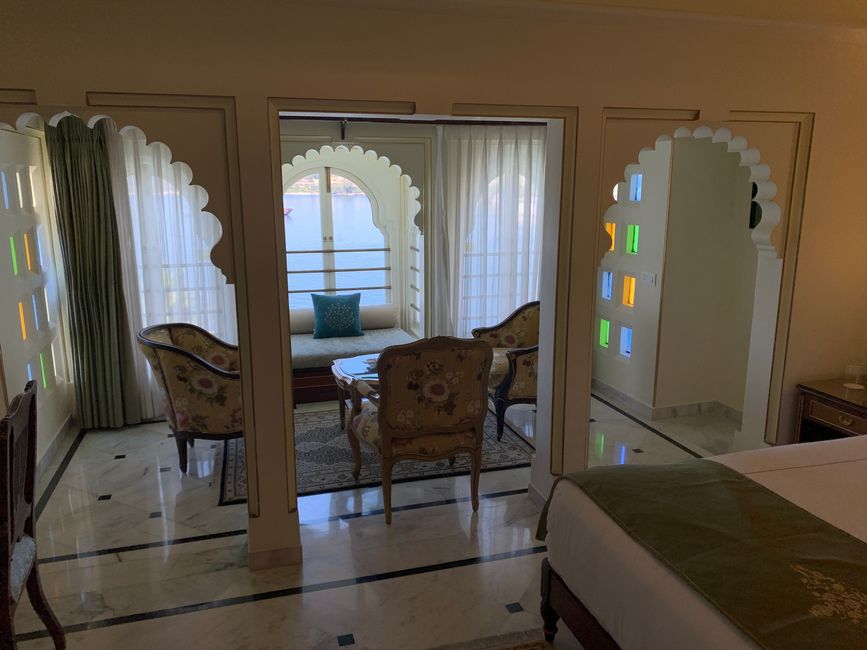



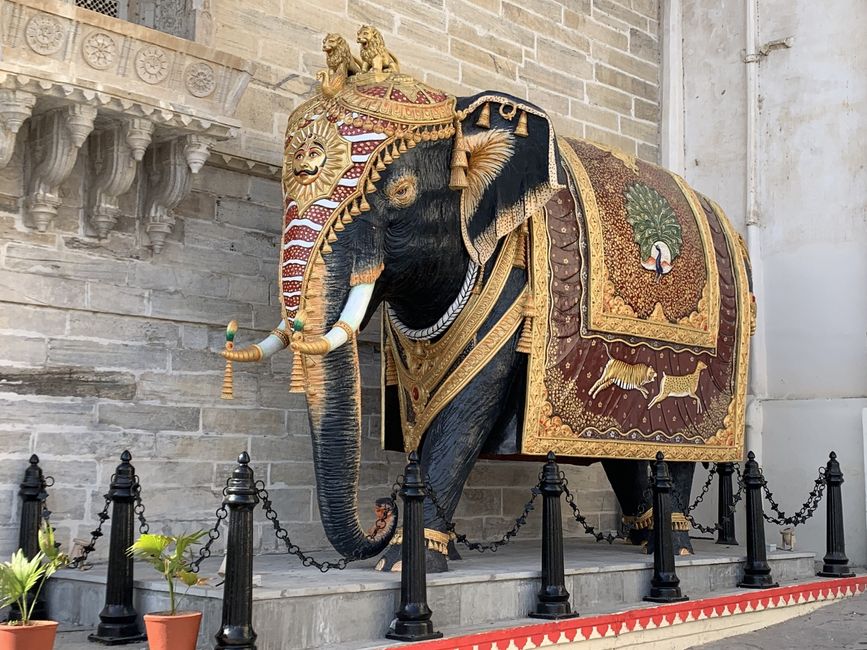
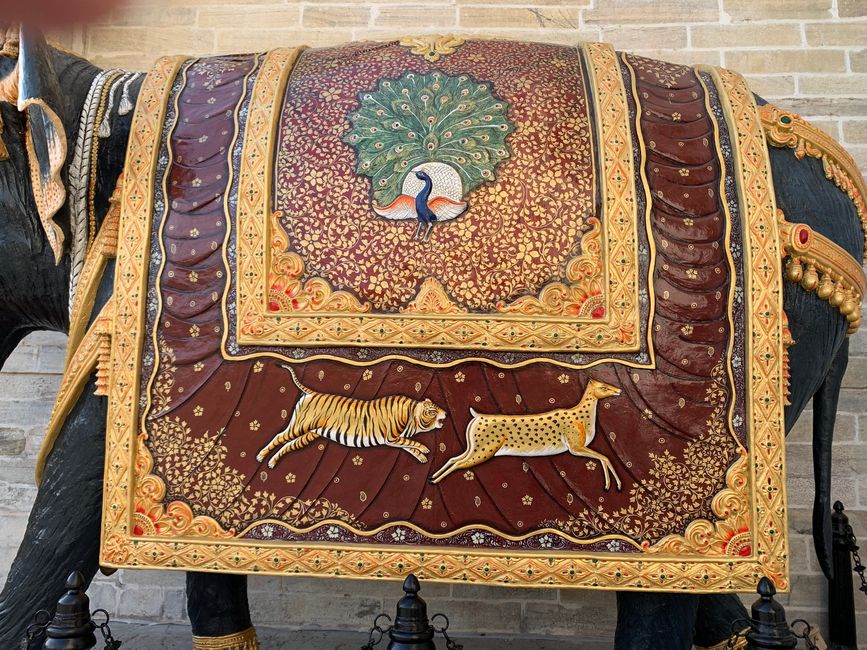
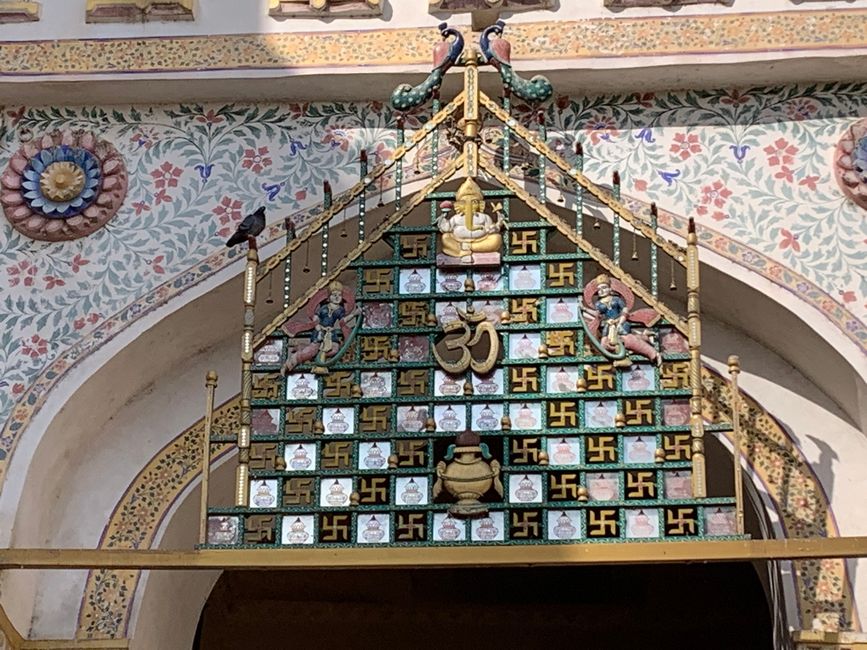
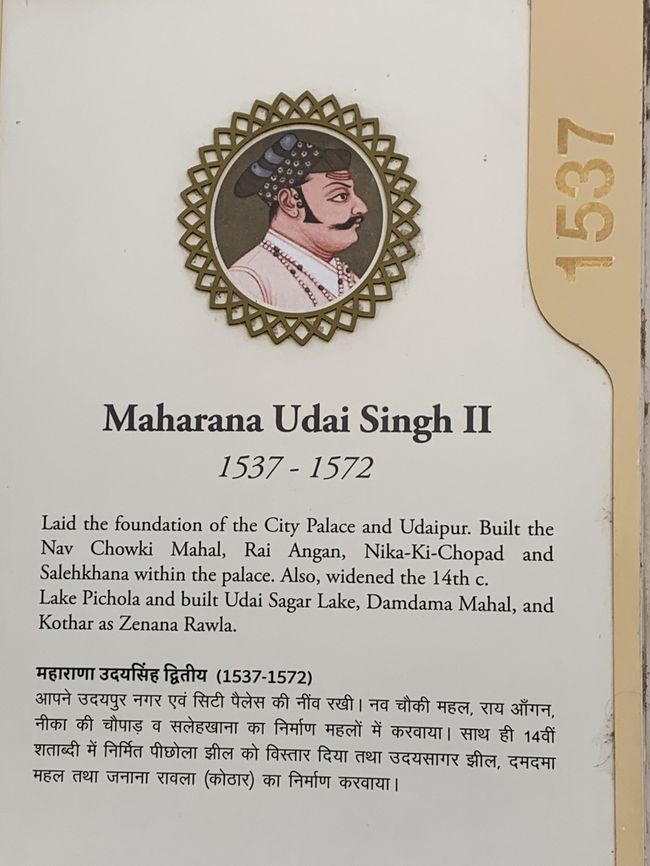
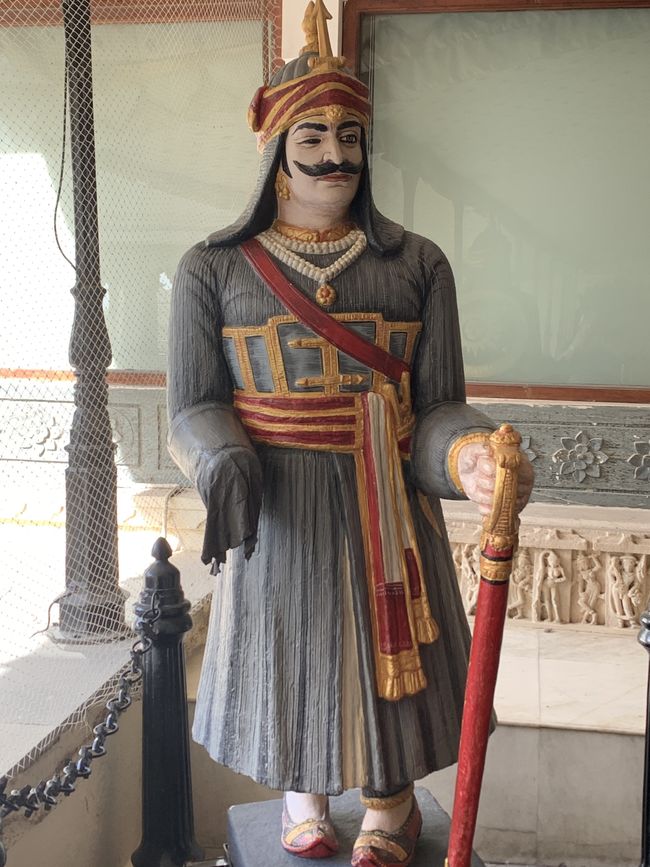
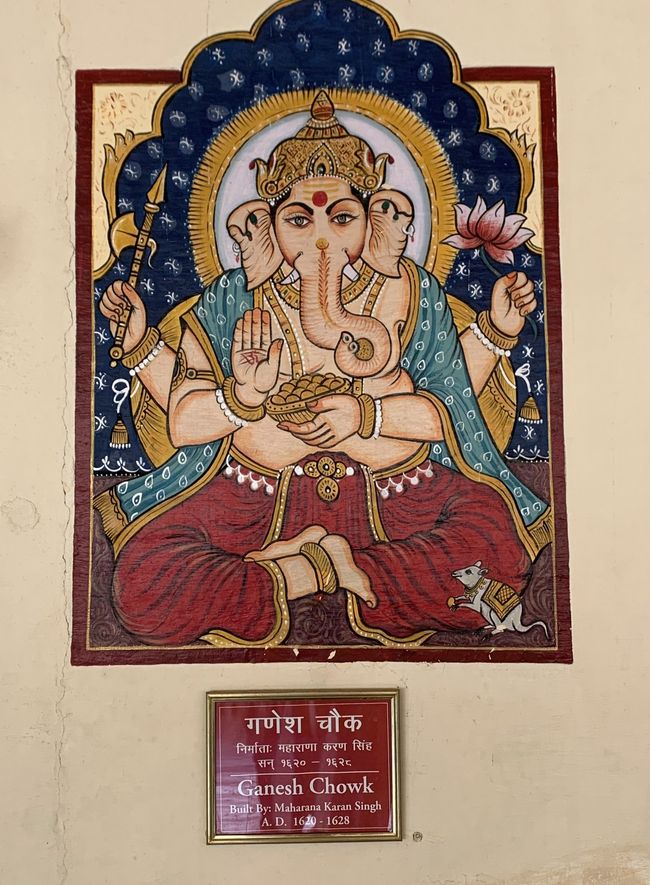
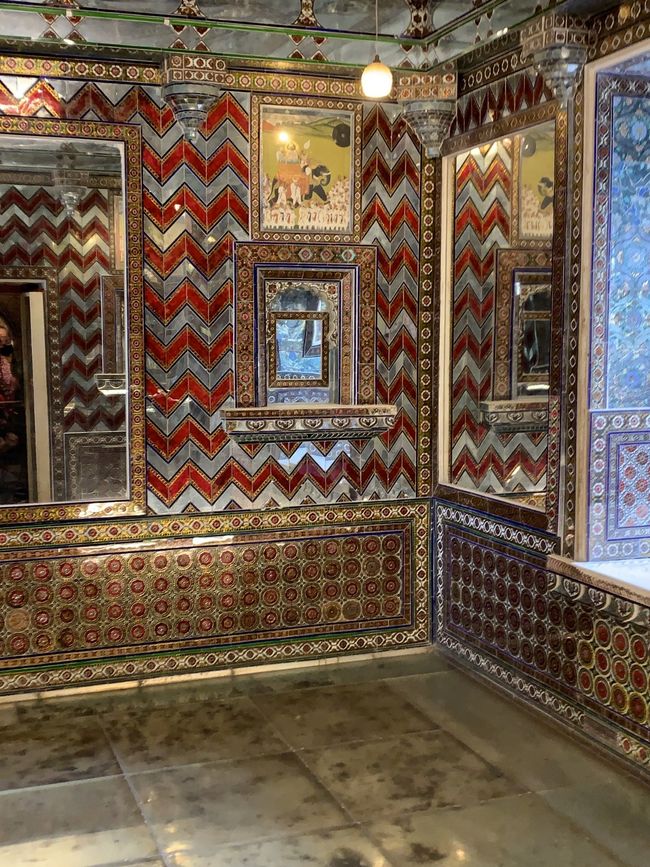
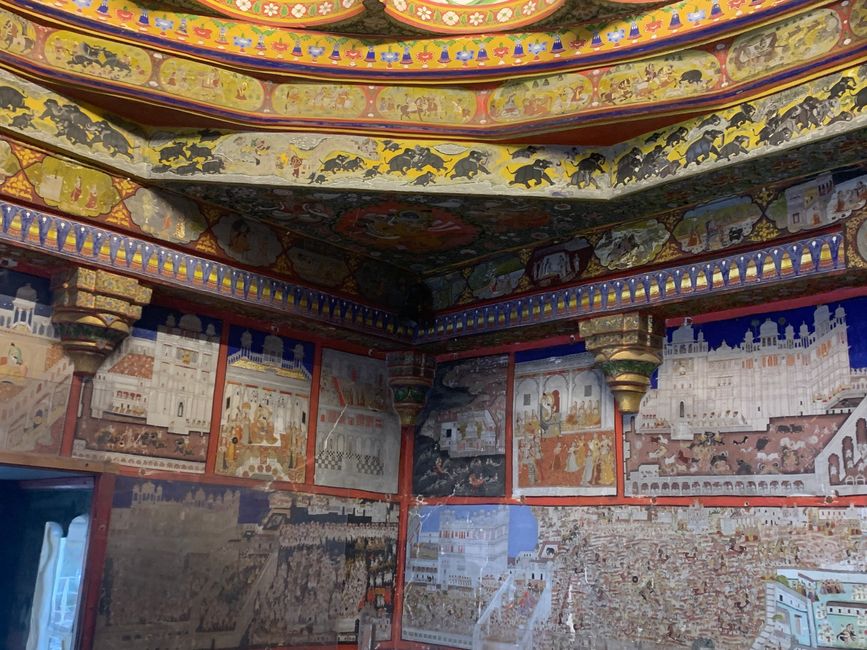
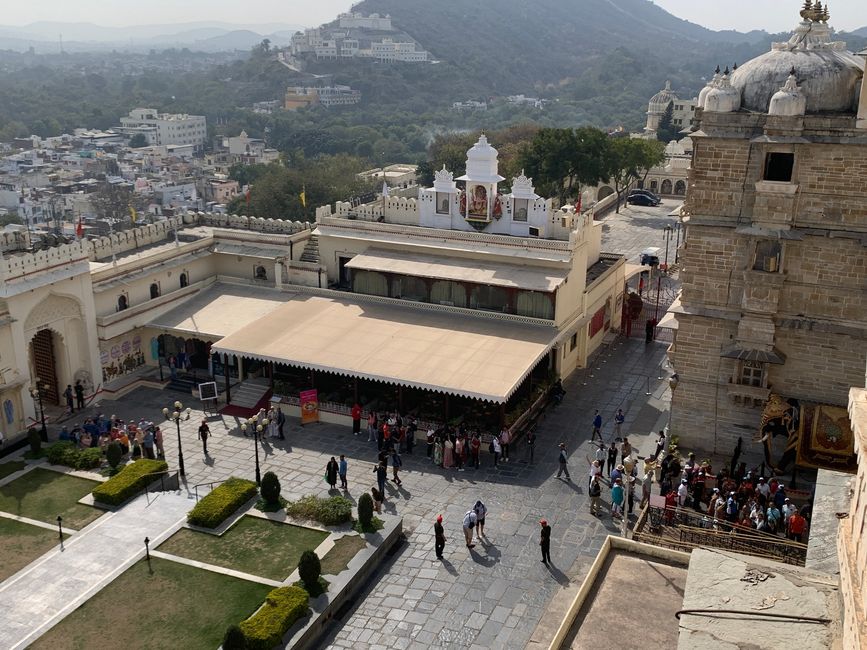
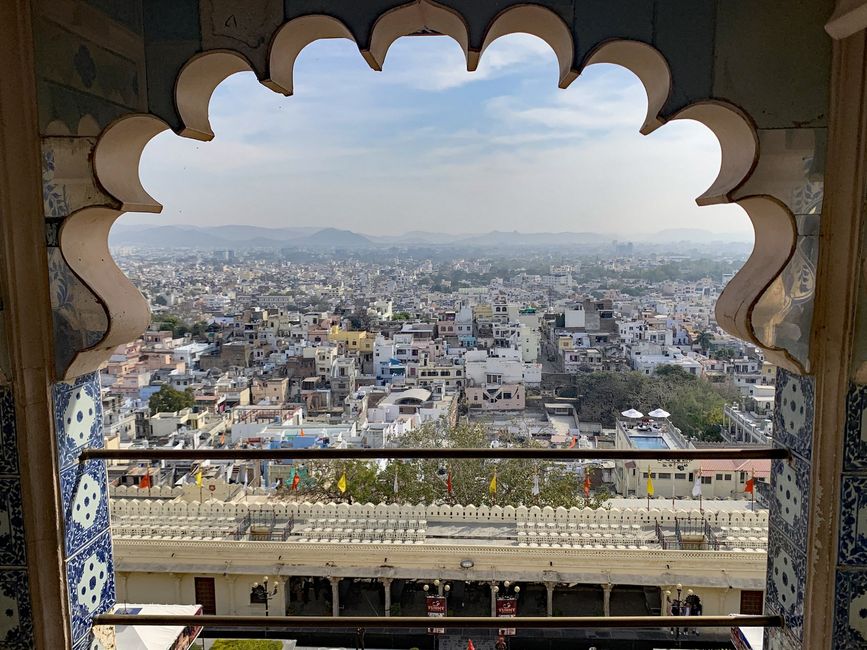
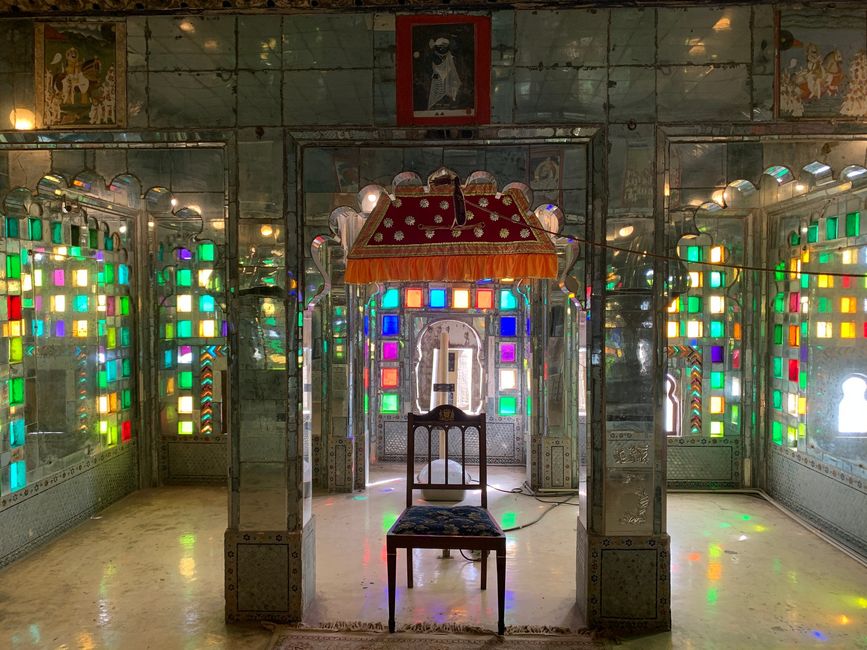
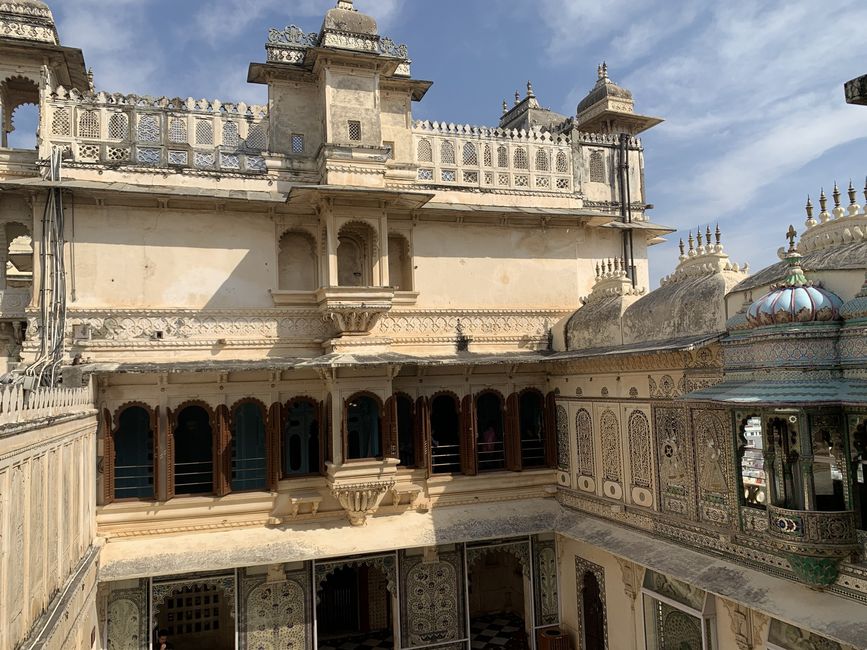


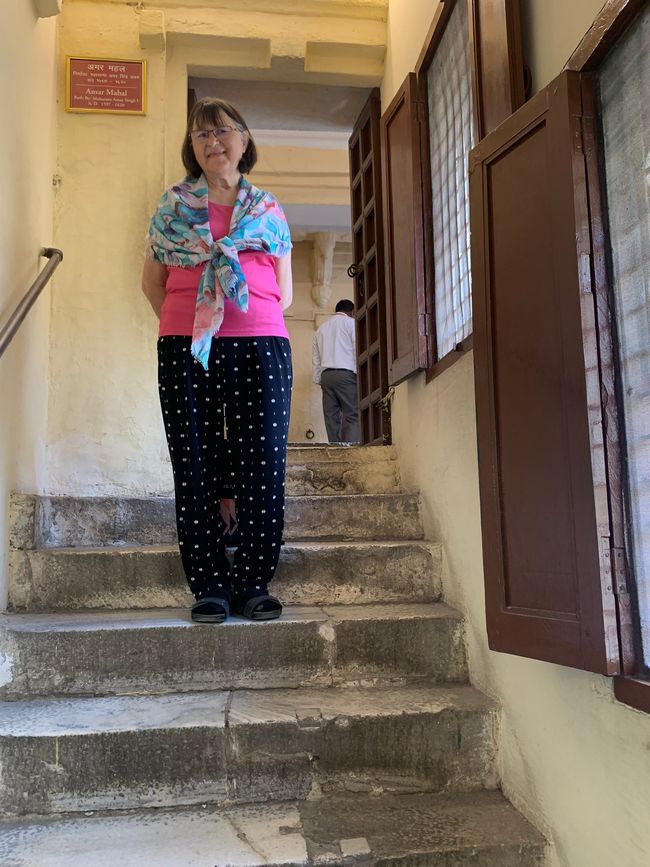
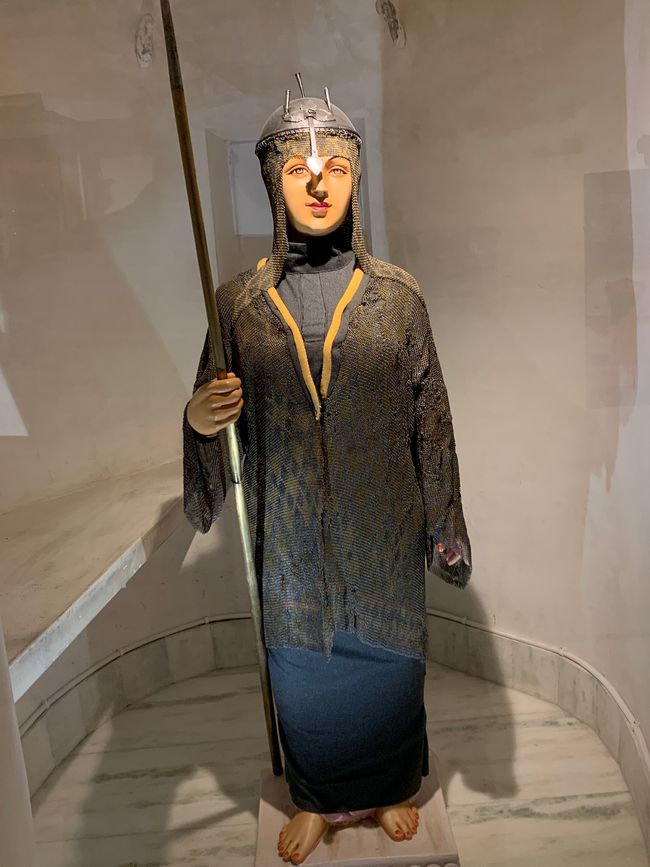
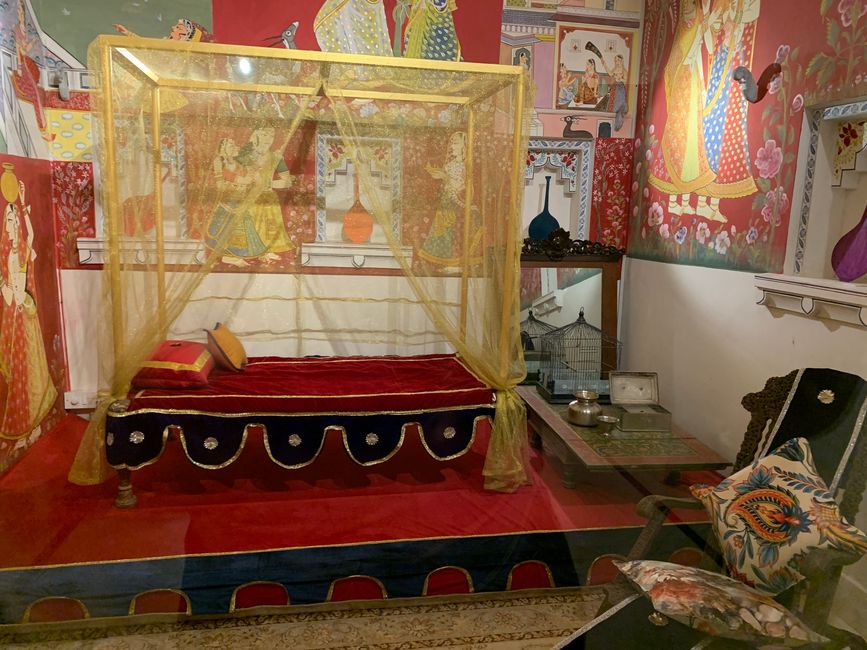
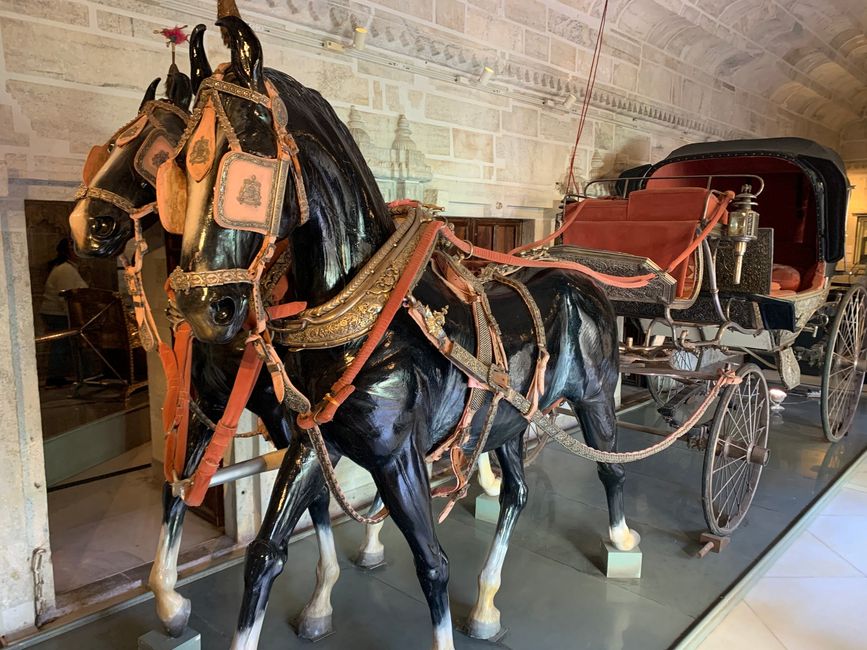
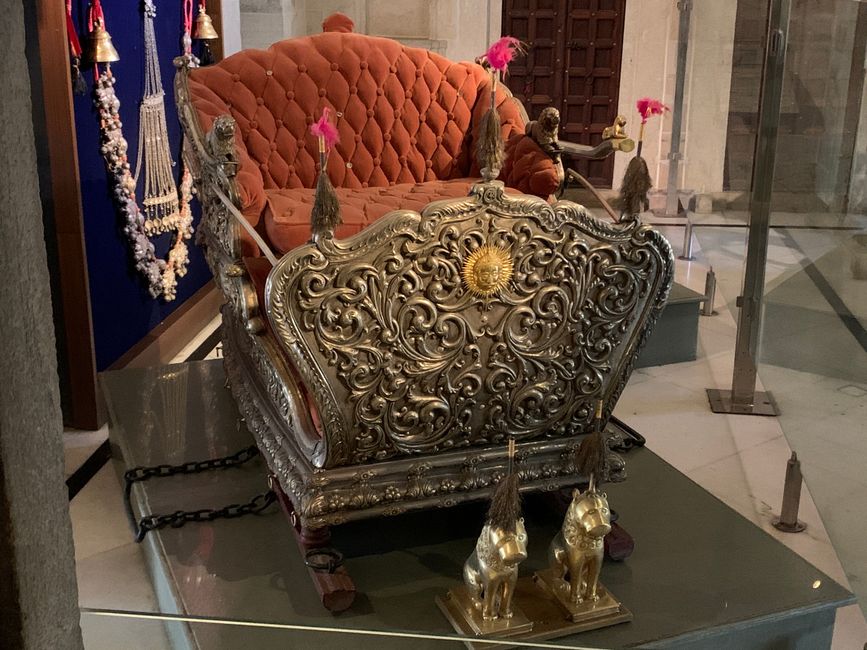
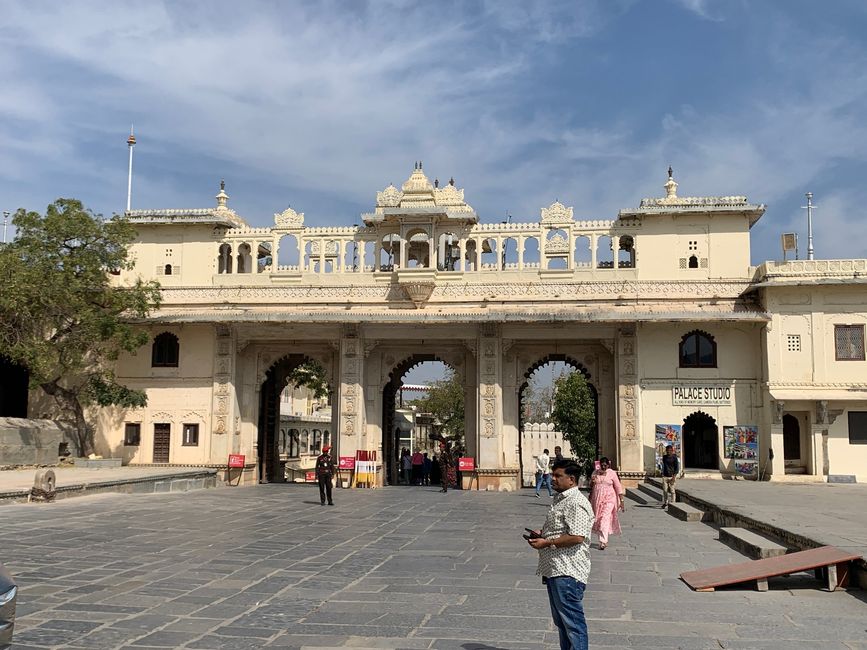

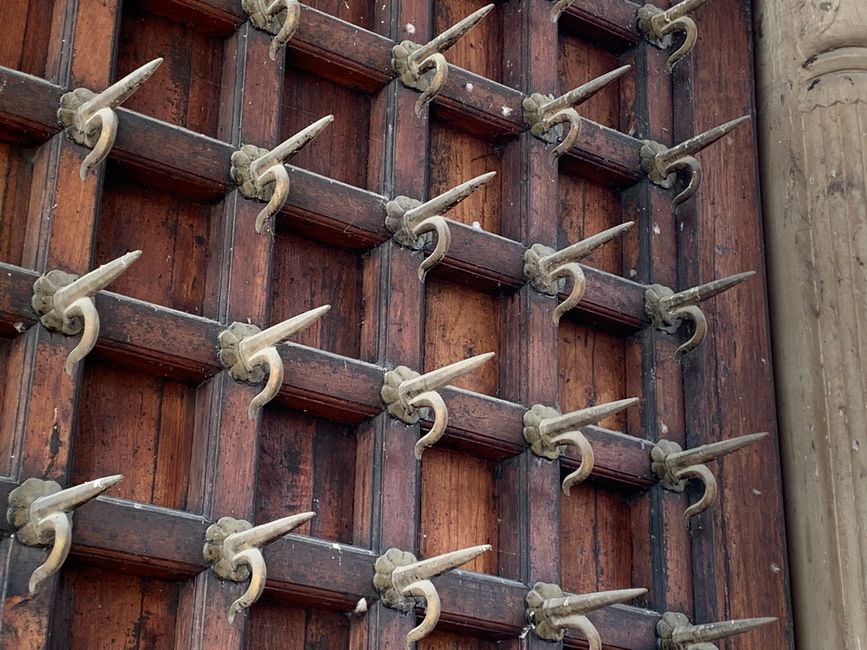

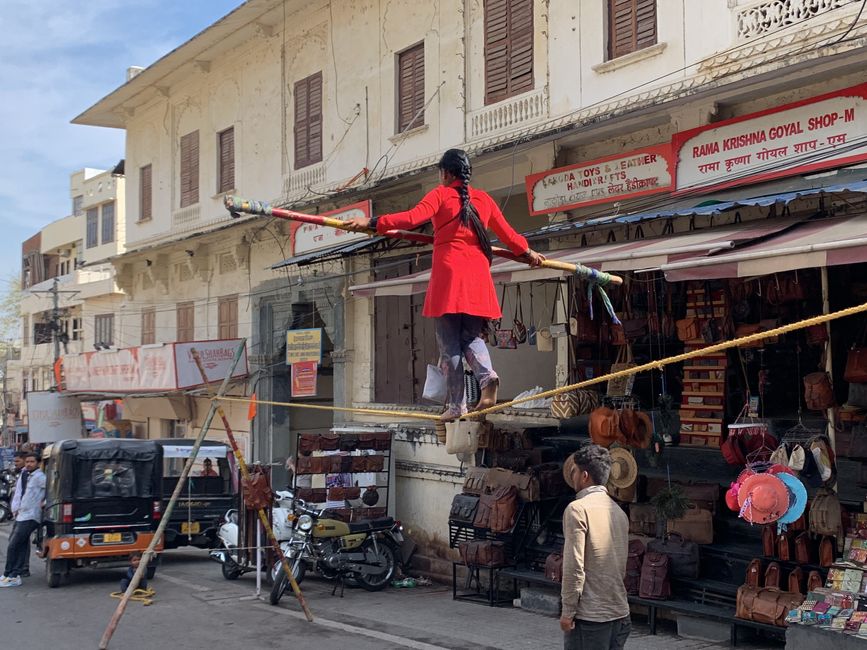
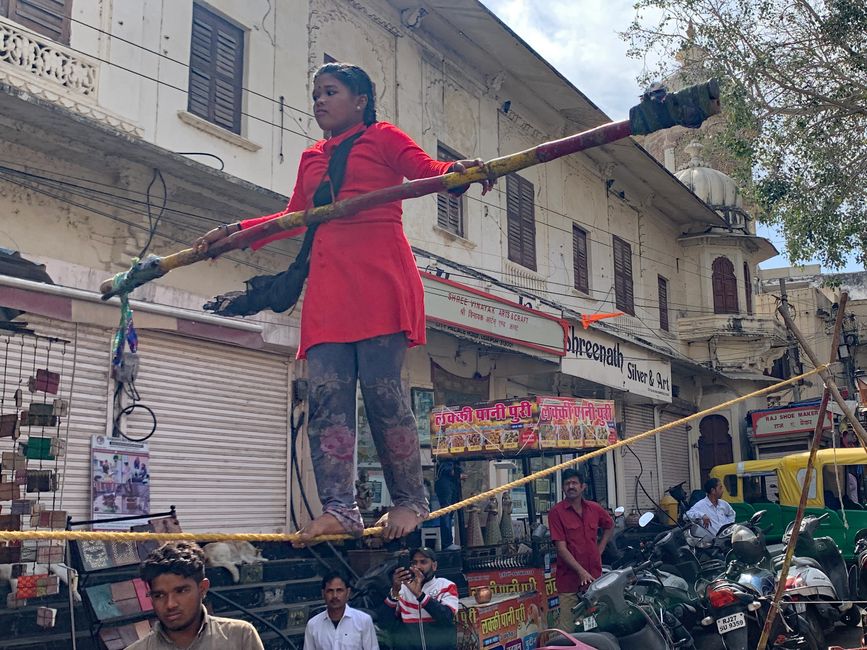
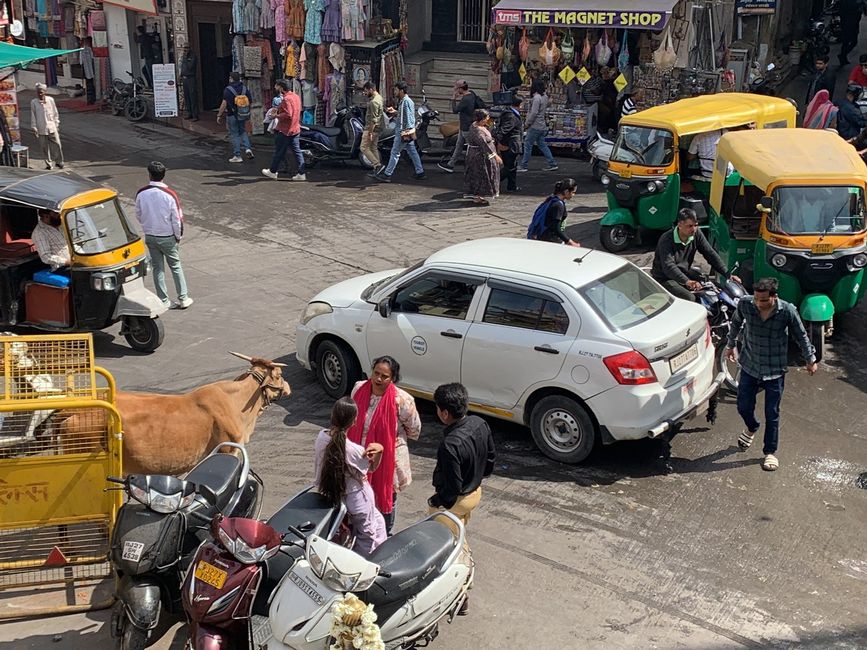
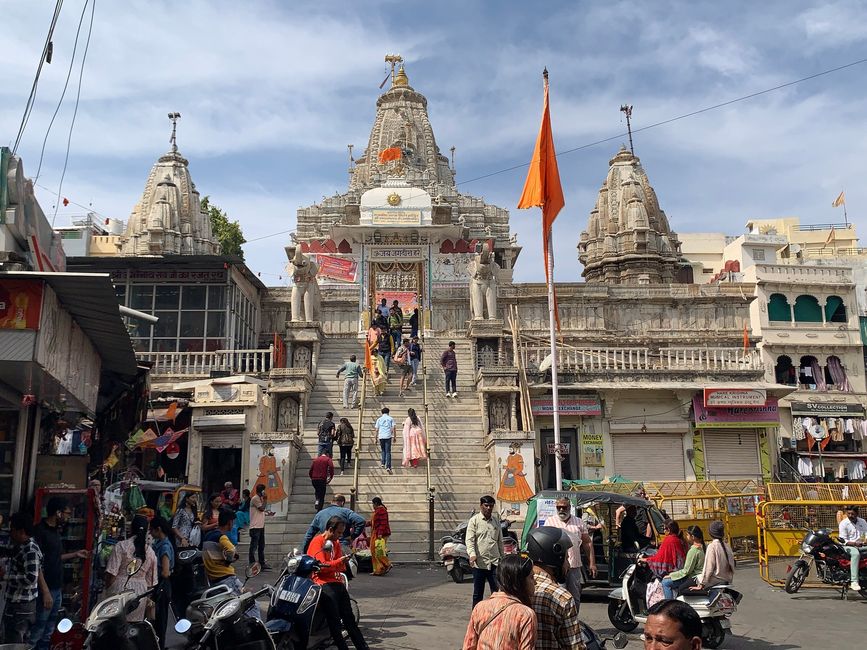
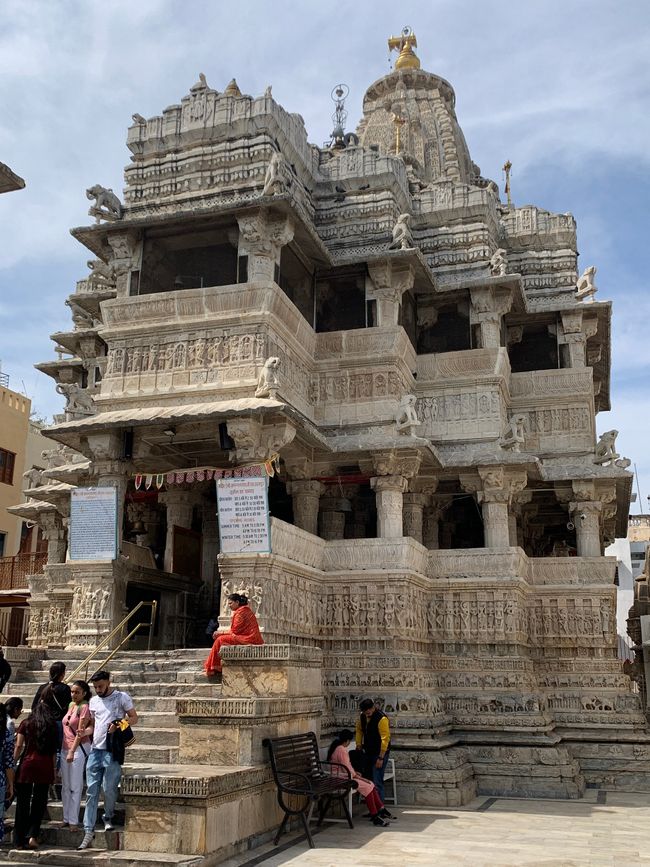
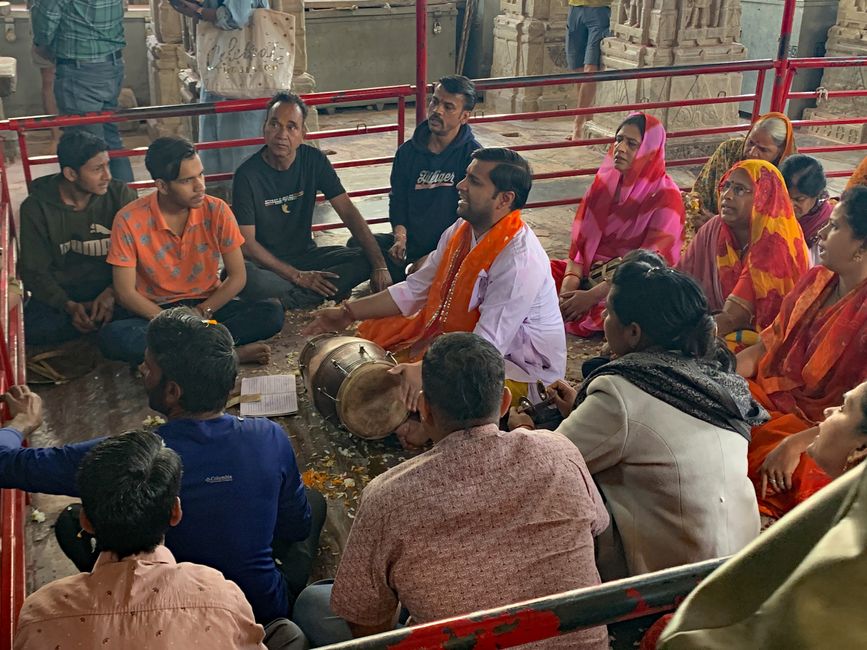
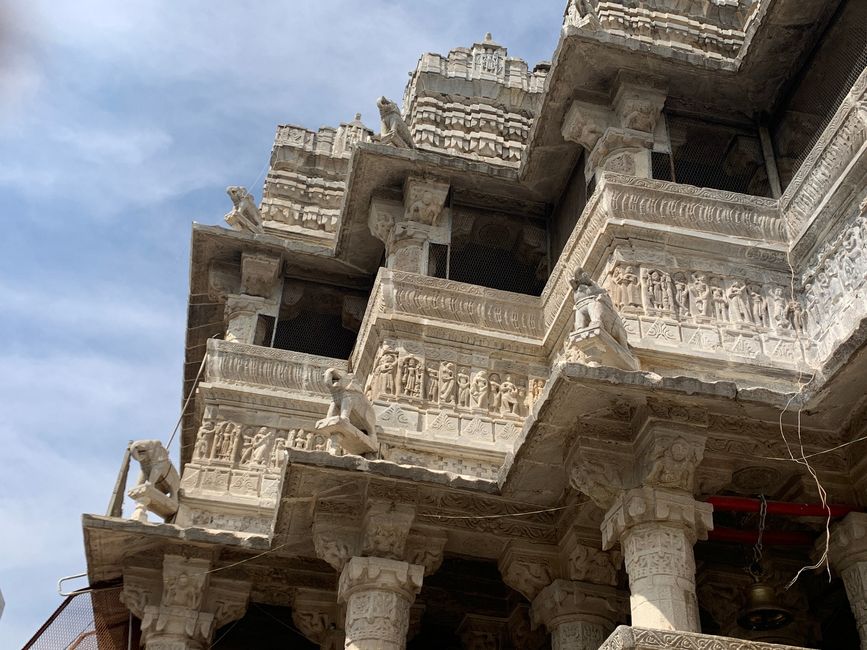
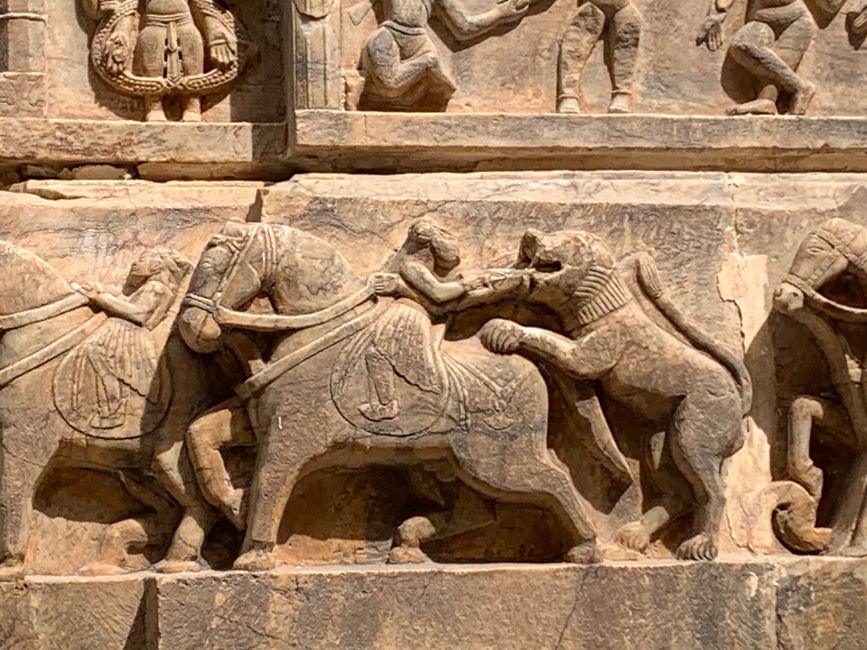

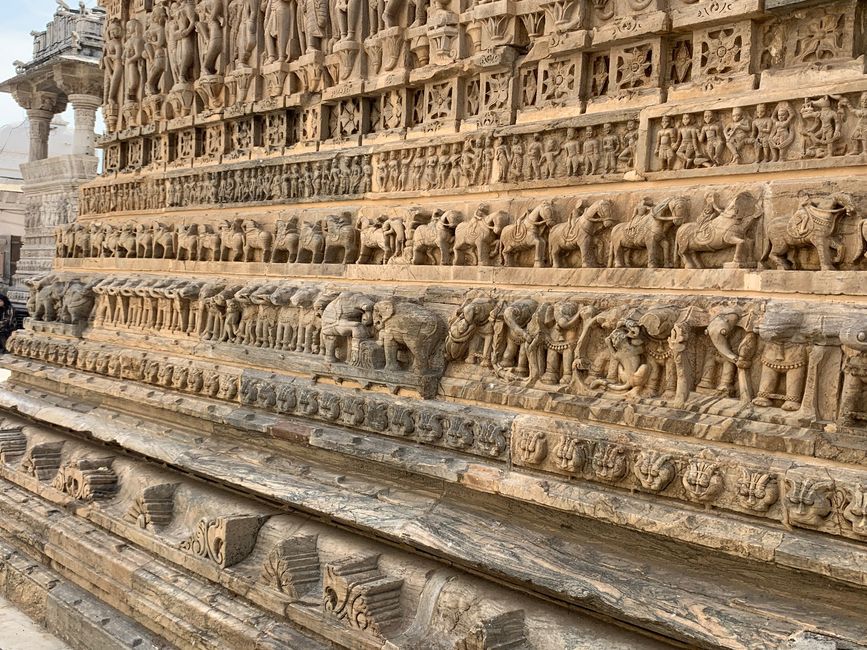
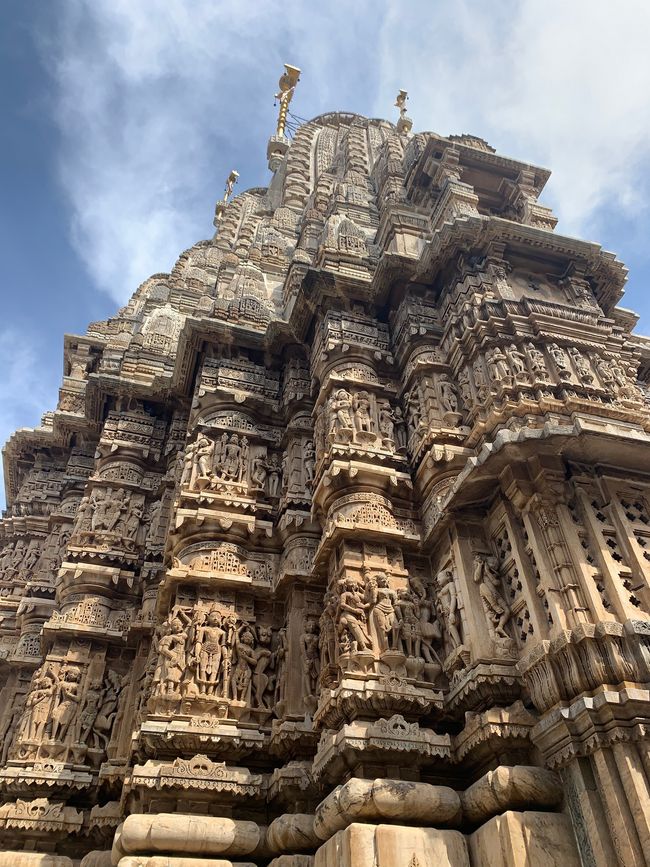
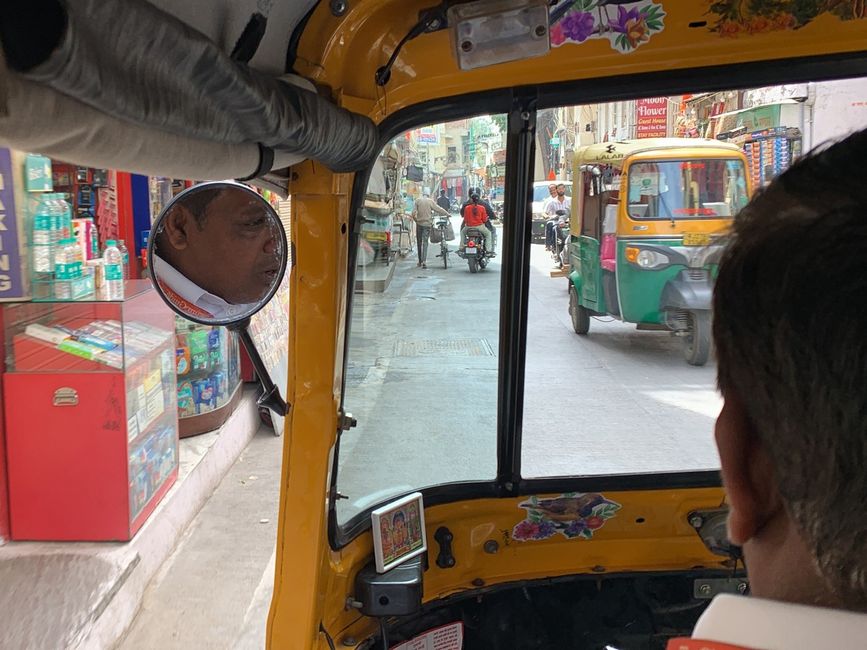
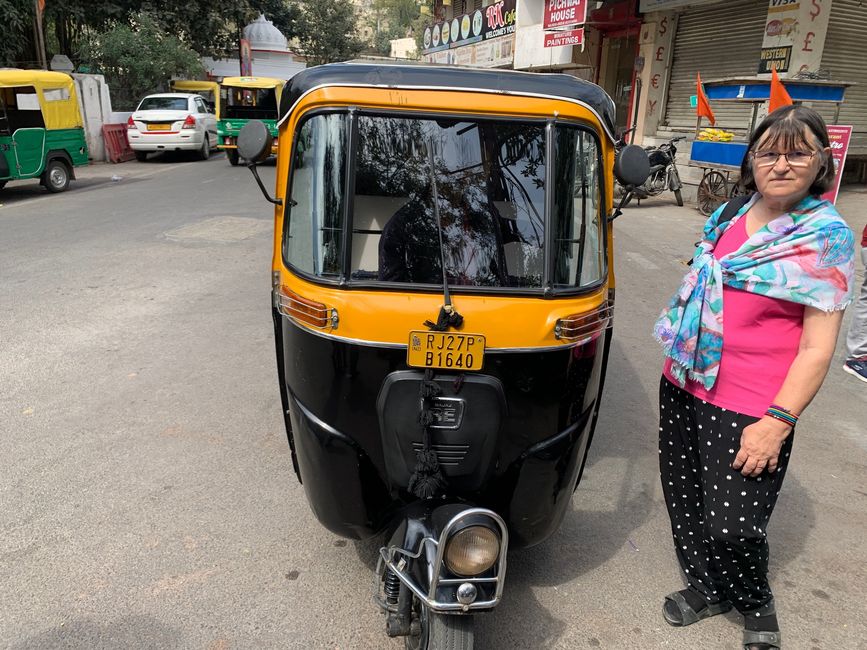
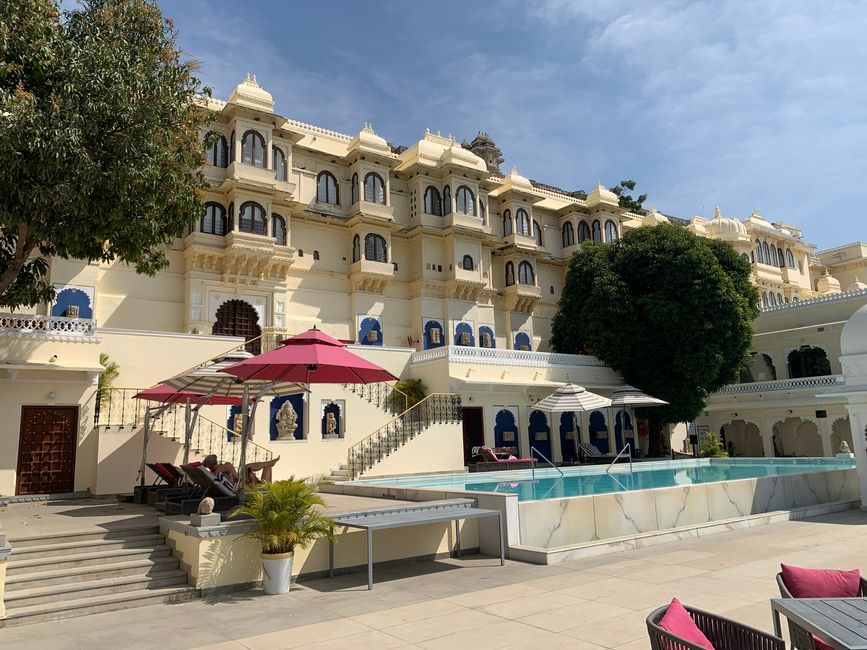
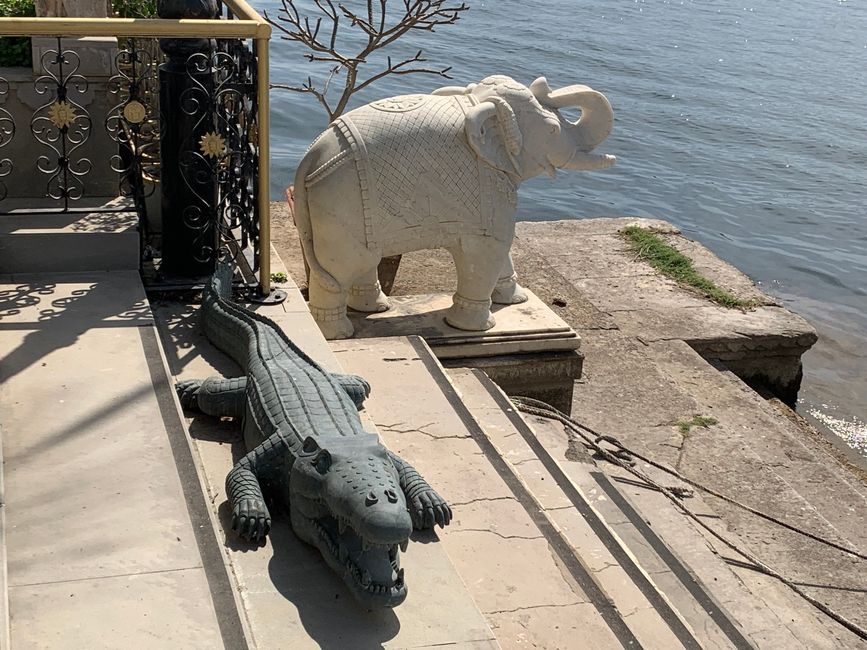
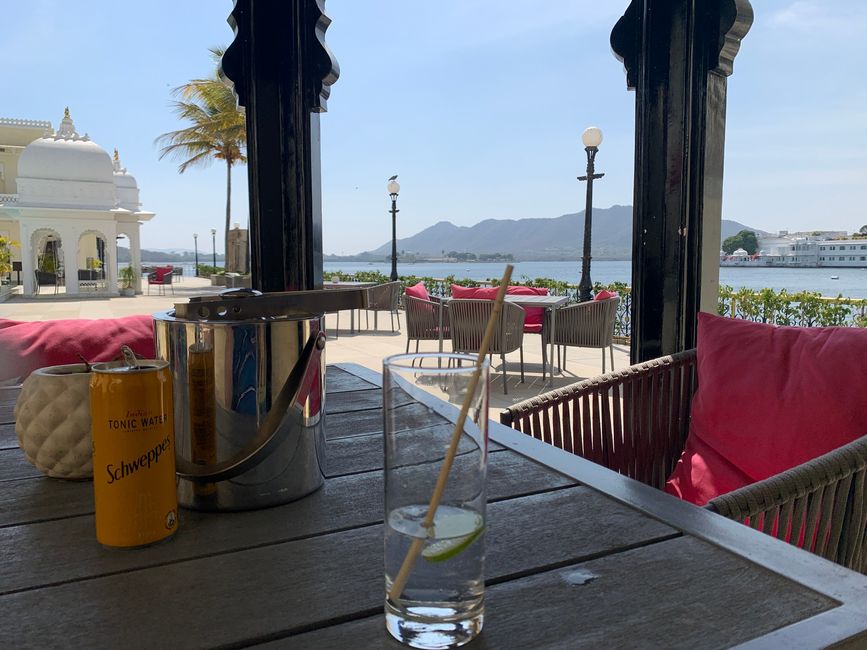
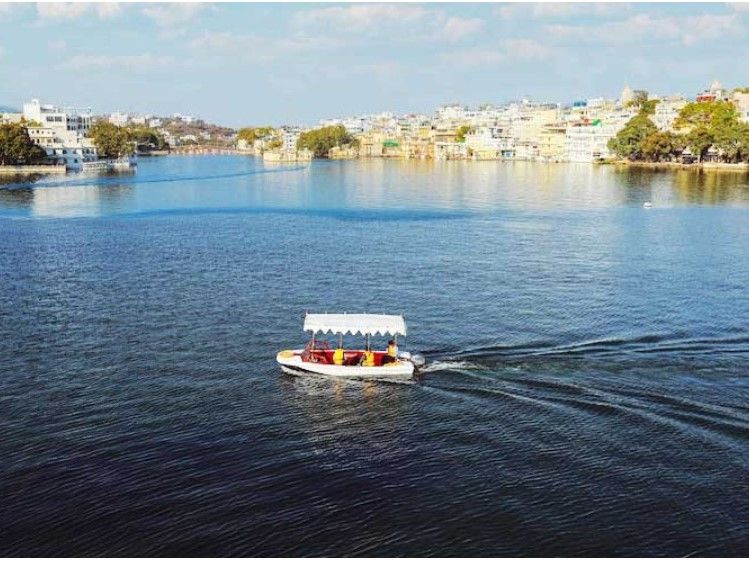
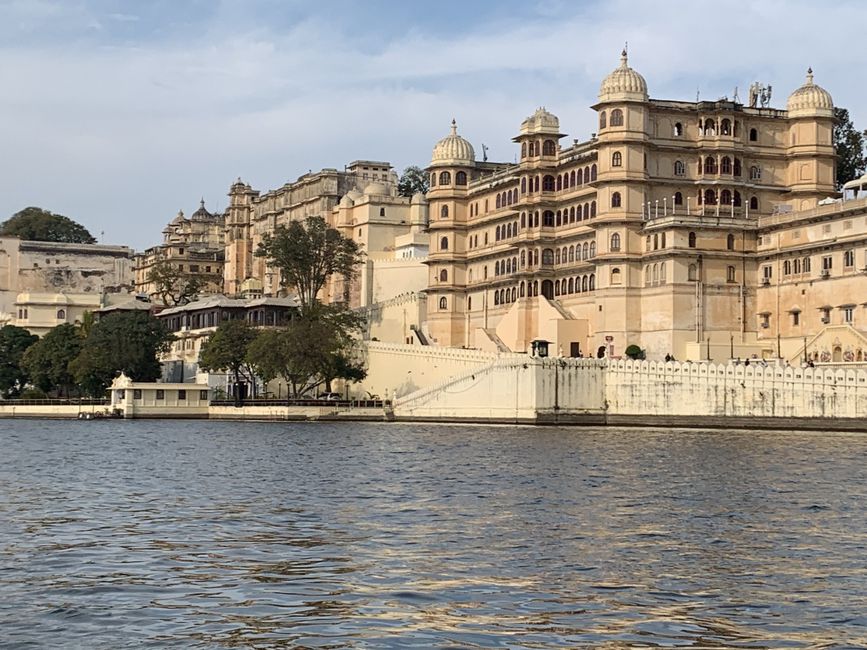
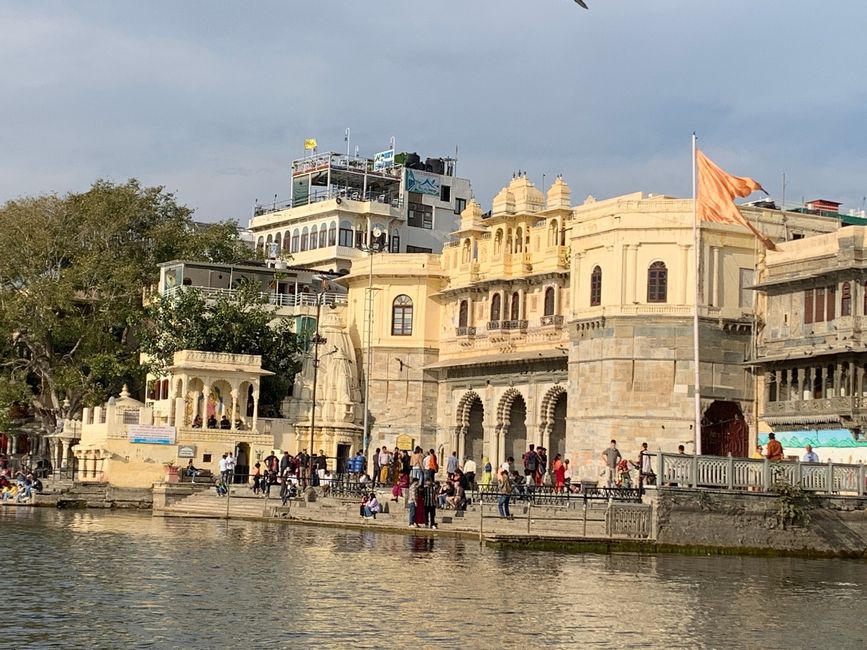
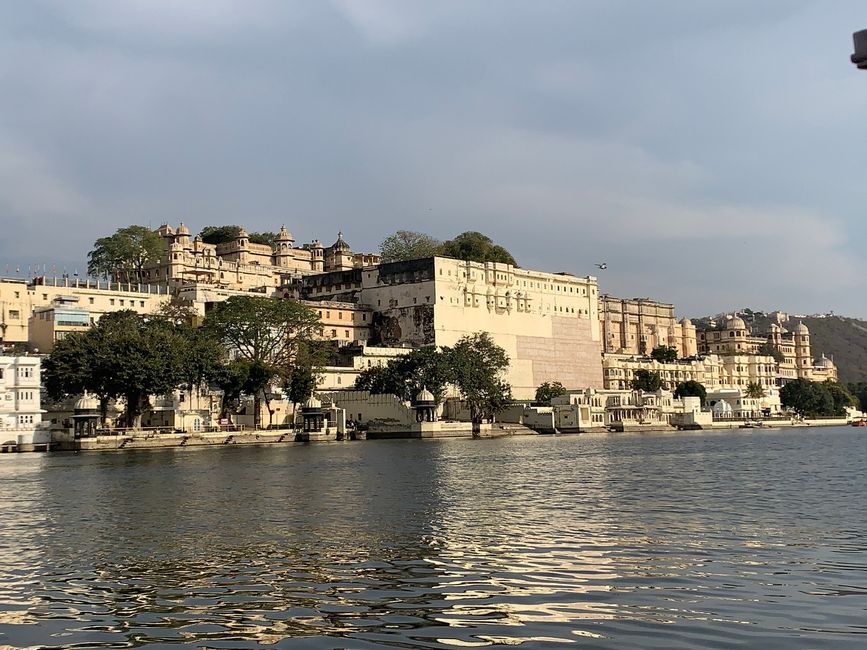
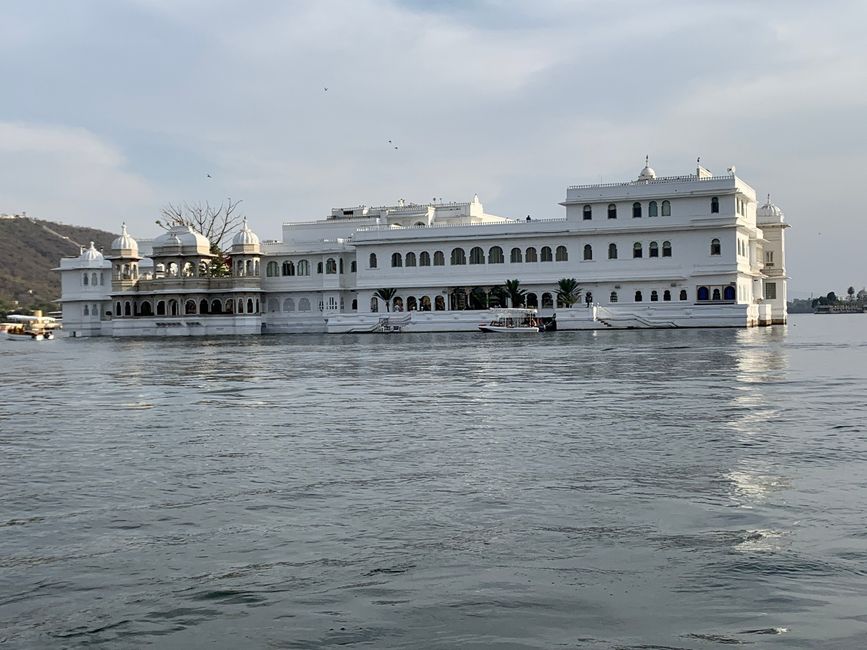
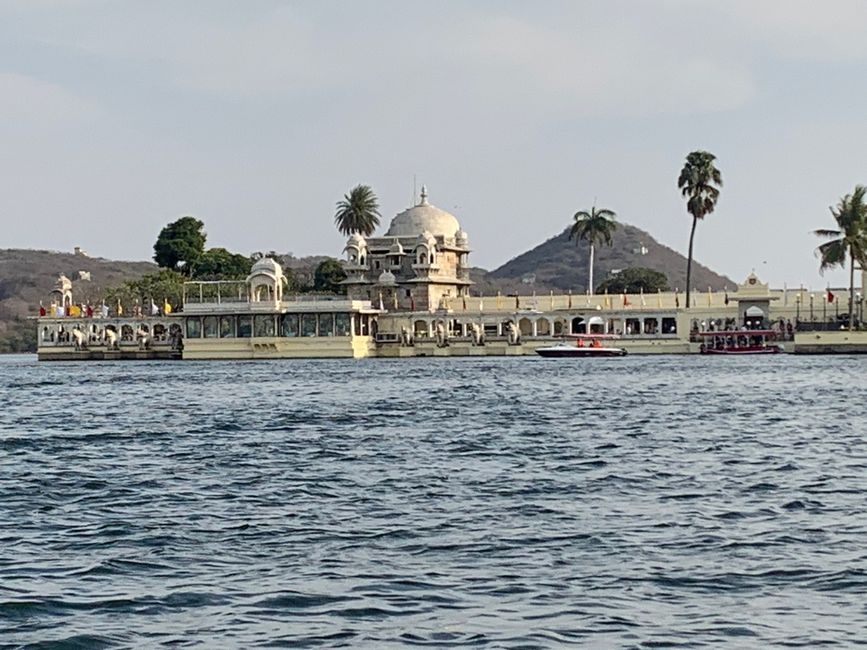
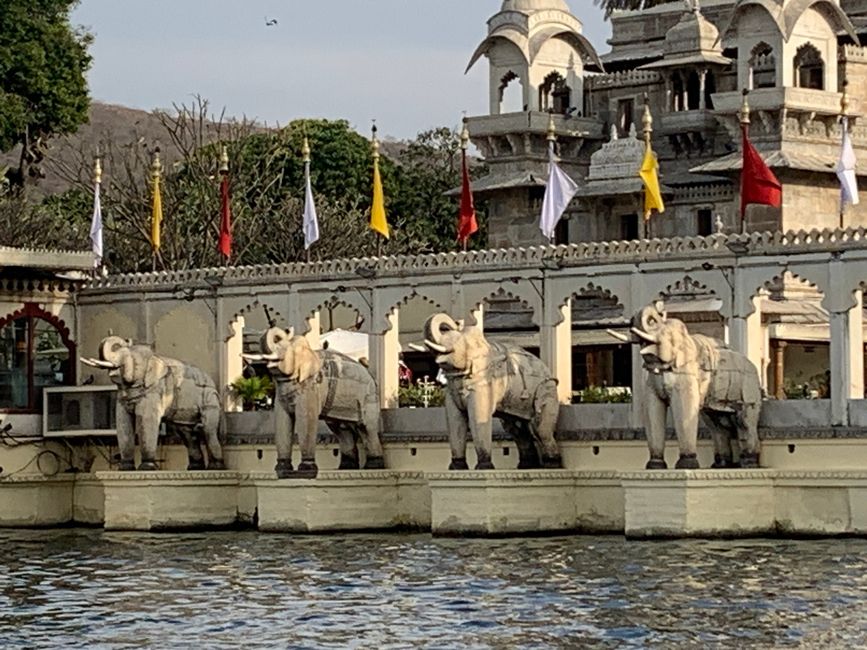
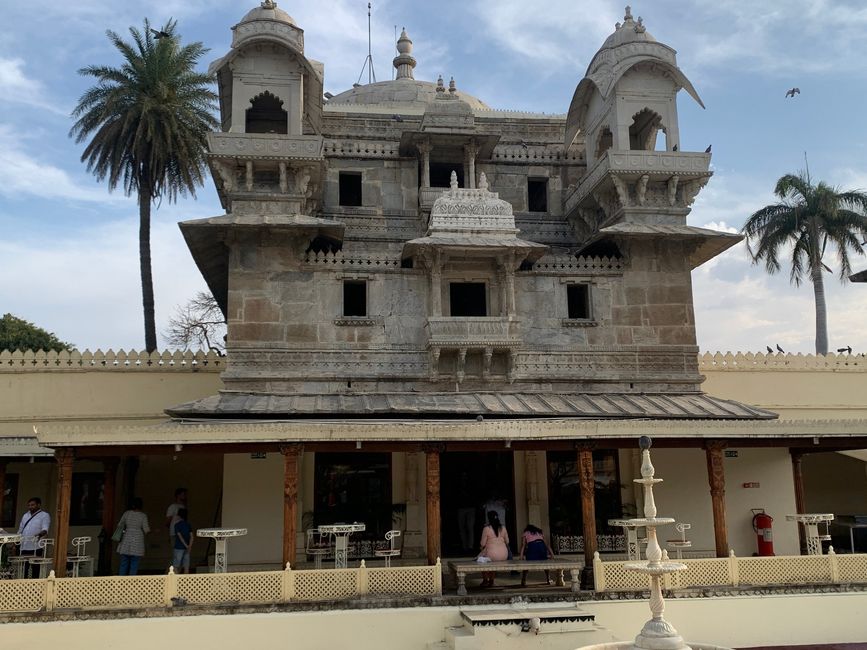

समाचार पत्रिका के लिए सदस्यता लें
We reach our next destination, the city of Udaipur, after a one-hour flight with the highly recommended airline “IndiGo”. Before that we say goodbye to our driver Khalid, who drove us coolly and safely from Gwalior to Bhopal over around 1500 km of Indian roads of very different quality. Thanks, Khalid: Great job!
Located on the eastern shore of Lake Pichola in the Indian state of Rajasthan, Udaipur was founded in 1559 AD by Maharana Udai Singh as the capital of his kingdom. The title “Maharana” comes from Sanskrit and means “Great Warrior” – in contrast to “Maharajah”, which means “Great King”. The Maharanas of Udaipur had to assert themselves for centuries against the aggressive Islamic Mughals from what is now Pakistan and Afghanistan.
Mukesh, our driver, who drove us on the first day in Delhi and drove almost 700 km from Delhi the day before to pick us up and take us back to Delhi, is waiting for us at the airport.
We arrive at our hotel Fateh Prakash Palace, part of the City Palace located directly on Lake Pichola. The current Maharana Arvand Singh Mewar has not only converted this part of the palace into a hotel, but is now also the CEO of the HRH Group of Hotels. He is the 76th guardian of the Mewar dynasty.
From our room we have a beautiful view of Lake Pichola with the Lake Palace on the island of Jag Niwas and the Jag Mandir island - both of which as well as the City Palace and the old town of Udaipur are locations in the James Bond film “Octopussy”.
City Palace
The construction of this palace was initiated by Maharana Udai Singh in the 16th century, but subsequent Maharanas added several palaces and structures to the complex while maintaining the remarkable uniformity of design. The entrance to the huge palace is via the Hathi Pol, the elephant gate. The exit to the old town today is through the Tripolia, the Triple Gate. It was the custom to weigh a new Maharana under this gate in gold and silver, which was distributed to the population. Balconies, domes and towers of the palace offer magnificent views of Lake Pichola and the city.
Through a lively lane we walk to the Jagdish Temple - Known as the largest temple in Udaipur city and depicting the Indo-Aryan architectural style, this exquisite temple was built in 1651 by Maharana Jagat Singh, who ruled the city of Udaipur from 1628 to 1653. The temple is dedicated to Lord Vishnu (Narayan), the preserver of the universe. This architectural marvel showcases not only beautifully carved columns and walls but also vibrant religious life.
After a short break at the hotel, we go on a boat trip to Lake Pichola - an artificial lake that was created as a water reservoir in the 14th century and expanded in the 16th century. We chug leisurely along the coast, then past the Lake Hotel to Jag Mandir Island, where we have a sundowner - unfortunately the promised spectacular sunset is canceled due to clouds.
But: Udaipur simply fascinated us!
-------------------------------------------------- -----------------------------------
We reach our next destination, the city of Udaipur, after a one-hour flight with the highly recommended airline “IndiGo”. Before that we say goodbye to our driver Khalid, who drove us coolly and safely from Gwalior to Bhopal over around 1500 km of Indian roads of very different quality. Thanks, Khalid: Great job!
Located on the eastern shore of Lake Pichola in the Indian state of Rajasthan, Udaipur was founded in 1559 AD by Maharana Udai Singh as the capital of his kingdom. The title “Maharana” comes from Sanskrit and means “Great Warrior” – in contrast to “Maharajah”, which means “Great King”. The Maharanas of Udaipur had to assert themselves for centuries against the aggressive Islamic Mughals from today's Pakistan and Afghanistan.
Mukesh, our driver, who drove us on the first day in Delhi and drove almost 700 km from Delhi the day before to pick us up and take us back to Delhi, is waiting for us at the airport.
We arrive at our hotel Fateh Prakash Palace, part of the City Palace located directly on Lake Pichola. The current Maharana Arvand Singh Mewar has not only converted this part of the palace into a hotel, but is now also the CEO of the HRH Group of Hotels. He is the 76th guardian of the Mewar dynasty.
From our room we have a beautiful view of Lake Pichola with the Lake Palace on the island of Jag Niwas and the Jag Mandir island - both of which as well as the City Palace and the old town of Udaipur are locations in the James Bond film “ Octopussy”.
City Palace
The construction of this palace was initiated by Maharana Udai Singh in 16th century, but subsequent Maharanas added several palaces and structures to the complex while maintaining the remarkable uniformity of design. The entrance to the huge palace is via the Hathi Pol, the elephant gate. The exit to the old town today is through the Tripolia, the Triple Gate. It was the custom to weigh a new Maharana under this gate in gold and silver, which was distributed to the population. Balconies, domes and towers of the palace offer magnificent views of Lake Pichola and the city.
Through a lively lane we walk to the Jagdish Temple - Known as the largest temple in Udaipur city and depicting the Indo-Aryan architectural style, this exquisite temple was built in 1651 by Maharana Jagat Singh, who ruled the city of Udaipur from 1628 to 1653 .The temple is dedicated to Lord Vishnu (Narayan), the preserver of the universe. This architectural marvel showcases not only beautifully carved columns and walls but also vibrant religious life.
After a short break at the hotel, we go on a boat trip to Lake Pichola - an artificial lake that was created as a water reservoir in the 14th century and expanded in the 16th century. We chug leisurely along the coast, then past the Lake Hotel to Jag Mandir Island, where we have a sundowner - unfortunately the promised spectacular sunset is canceled due to clouds.
But: Udaipur simply fascinated us!
समाचार पत्रिका के लिए सदस्यता लें
उत्तर
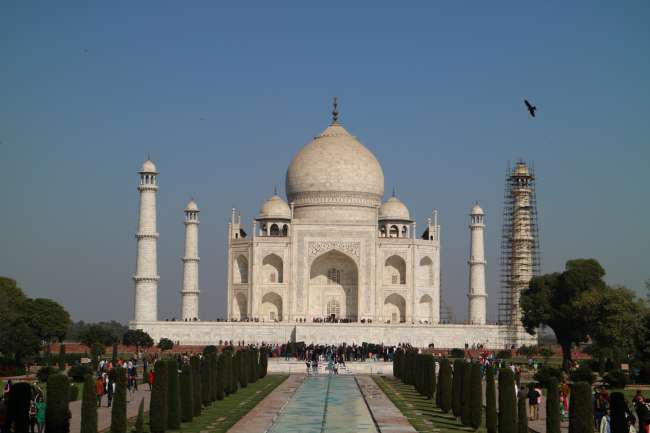
यात्रा रिपोर्ट भारत
